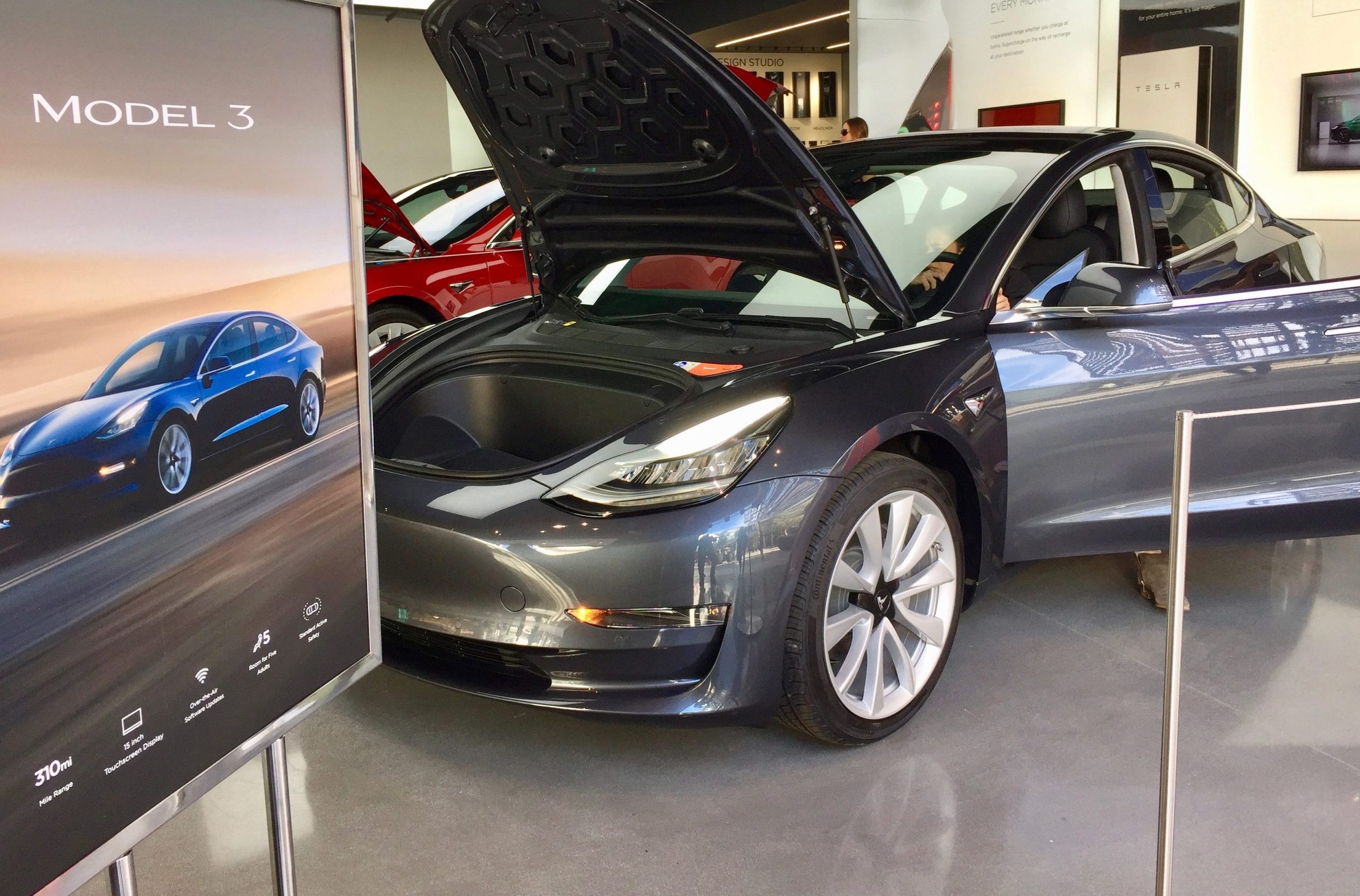
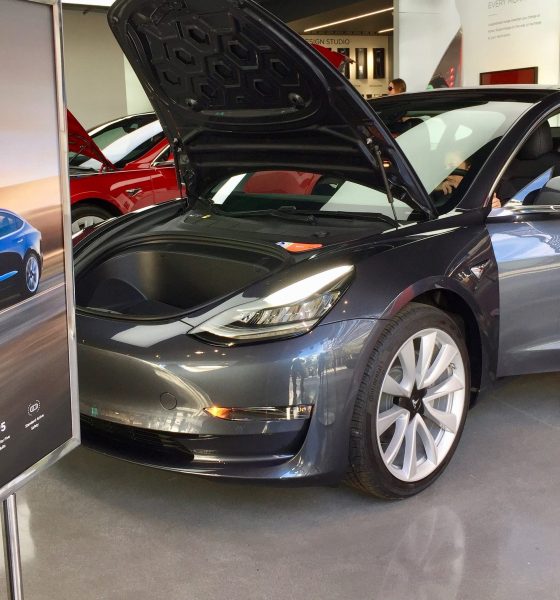
Investor's Corner
Tesla stock (TSLA) splits Wall St. as analysts weigh in on Model 3 sustainability
Tesla stock (NASDAQ:TSLA) has been characteristically volatile, to the point where CEO Elon Musk boldly declared during the company’s Q1 2018 earnings call that people who fear volatility should not invest in the company. With Tesla recently announcing the date of its Q2 2018 financial results and earnings call, the electric car maker is once more dividing Wall Street down the middle, with bulls and bears both reiterating their stance on the company’s performance.
Mott Capital Management LLC founder Michael Kramer recently noted that Tesla’s investors should prepare themselves for a wild ride, as his firm expects the company’s shares to rise or fall by as much as 17% over the next two months. According to Kramer, Tesla stock would likely trade anywhere between $265 to $375 over the next ~65 days. The Mott Capital founder also estimates that Tesla’s September options would likely see a lot of implied volatility on September, at roughly 50% — almost five times greater than the S&P 500’s implied volatility of 10%.
A key factor that would determine Tesla’s performance in the stock market for the next few months would be the Model 3 — a vehicle that Elon Musk aptly dubbed as a “bet-the-company” project. With Tesla attaining its Q2 2018 production target of manufacturing 5,000 Model 3 per week by the end of June, the electric car maker appears to be suggesting that its self-imposed “production hell” is about to end.
In a recent note, Argus Research analyst Bill Selesky backed the firm’s Buy rating for Tesla, placing a price target of $444 (a +36% upside potential) for the company’s stock. According to Selesky, Argus’ positive stance stands on an optimistic outlook for revenue gains from the Model S and X, as well as strong demand for the Model 3 sedan. The analyst further noted that while Tesla’s production figures for the Model 3 during the first quarter fell below its expectations, Argus believes that the company would show an improvement in the second quarter. Finally, Selesky stated that Model 3 production costs would likely diminish next year, enabling Tesla to achieve a healthy gross margin for the vehicle in late 2019.
“Although first quarter production of the Model 3 fell short of our forecast and management’s guidance, the company recently reached its 5,000 per week production target. As such, we expect significant sequential improvement in the second quarter. We expect the company to achieve its target gross margin of 25% on the Model 3 in late 2019, in line with the margins already achieved on the Model S and Model X,” Selesky wrote.
Needham & Co’s Rajvindra Gill, however, released a note downgrading Tesla to a Sell, citing an uptick in cancellations for Model 3 orders. According to the analyst, Needham’s estimates suggest that Tesla’s refund rate for the Model 3 has outpaced deposits for the electric car.
“Based on our checks, refunds are outpacing deposits as cancellations accelerate. The reasons are varied: extended wait times, the expiration of the $7,500 credit, and unavailability of the $35k base model. In August ’17, TSLA cited a refund rate of 12%. Almost a year later, we believe it has doubled and outpaced deposits. Model 3 wait times are currently 4-12 months, and with base model not available until mid-2019, consumers could wait until 2020,” the analyst wrote.
Since the beginning of July, Tesla appears to have gone all-in on the Model 3, pushing the vehicle to buyers through test drive programs and initiatives such as a 5-minute Sign & Drive delivery system. Signs over the past weeks also indicate that Tesla is all but accelerating its Model 3 push for the third quarter, with more than 19,000 new VINs filed so far in July, and a 19% increase in hiring activity since the month started. A vote of confidence for the company’s profitability also came recently from Detroit, after teardown specialist Sandy Munro stated that the Model 3’s Long Range RWD variant could give Tesla a 36% profit. Munro also estimates that the $35,000 base Model 3 could still give the electric car maker a profit of 18%.
Disclosure: I have no ownership in shares of TSLA and have no plans to initiate any positions within 72 hours.

Investor's Corner
Tesla stock closes at all-time high on heels of Robotaxi progress
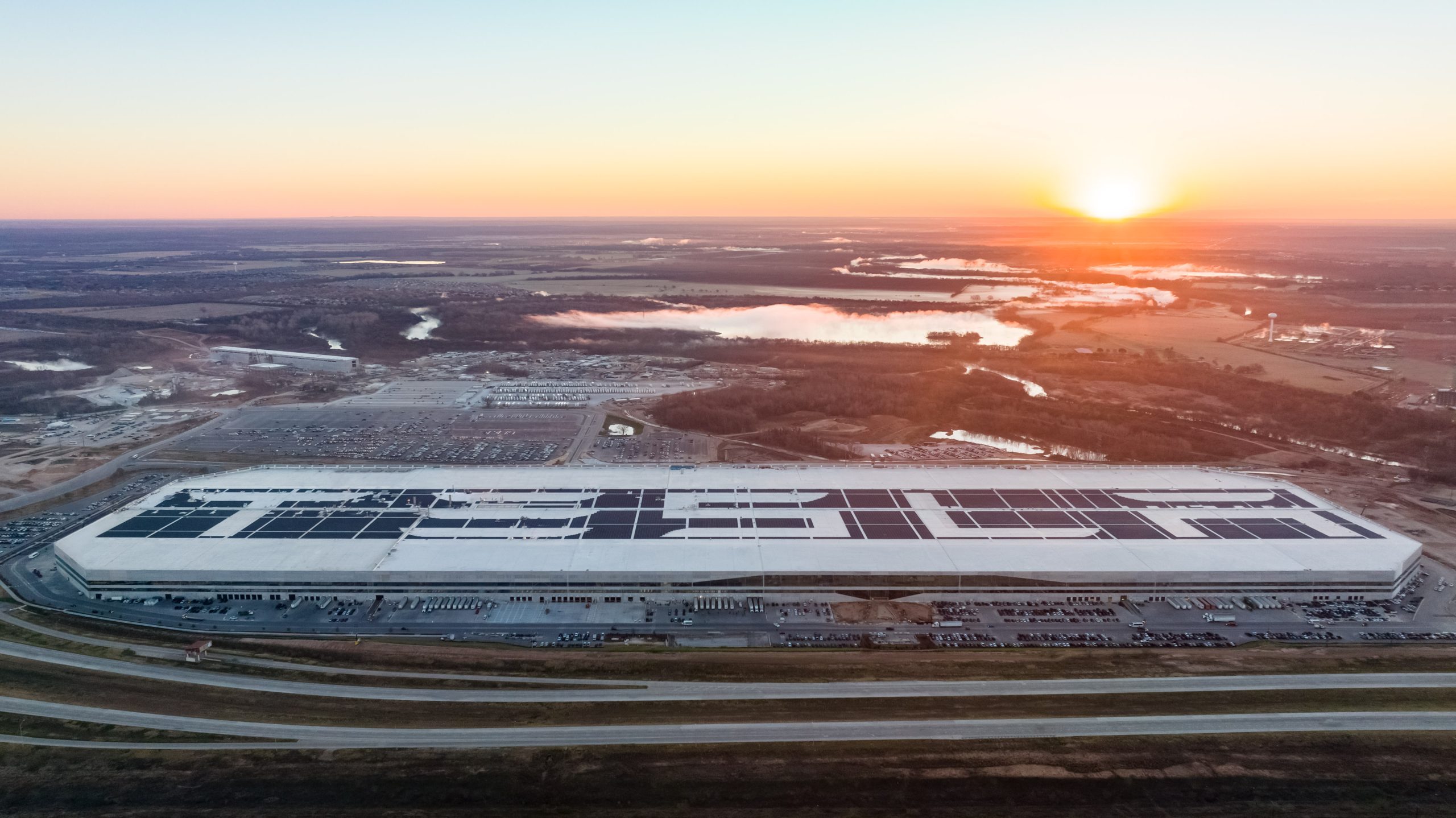
Tesla stock (NASDAQ: TSLA) closed at an all-time high on Tuesday, jumping over 3 percent during the day and finishing at $489.88.
The price beats the previous record close, which was $479.86.
Shares have had a crazy year, dipping more than 40 percent from the start of the year. The stock then started to recover once again around late April, when its price started to climb back up from the low $200 level.
This week, Tesla started to climb toward its highest levels ever, as it was revealed on Sunday that the company was testing driverless Robotaxis in Austin. The spike in value pushed the company’s valuation to $1.63 trillion.
Tesla Robotaxi goes driverless as Musk confirms Safety Monitor removal testing
It is the seventh-most valuable company on the market currently, trailing Nvidia, Apple, Alphabet (Google), Microsoft, Amazon, and Meta.
Shares closed up $14.57 today, up over 3 percent.
The stock has gone through a lot this year, as previously mentioned. Shares tumbled in Q1 due to CEO Elon Musk’s involvement with the Department of Government Efficiency (DOGE), which pulled his attention away from his companies and left a major overhang on their valuations.
However, things started to rebound halfway through the year, and as the government started to phase out the $7,500 tax credit, demand spiked as consumers tried to take advantage of it.
Q3 deliveries were the highest in company history, and Tesla responded to the loss of the tax credit with the launch of the Model 3 and Model Y Standard.
Additionally, analysts have announced high expectations this week for the company on Wall Street as Robotaxi continues to be the focus. With autonomy within Tesla’s sights, things are moving in the direction of Robotaxi being a major catalyst for growth on the Street in the coming year.
Elon Musk
Tesla needs to come through on this one Robotaxi metric, analyst says
“We think the key focus from here will be how fast Tesla can scale driverless operations (including if Tesla’s approach to software/hardware allows it to scale significantly faster than competitors, as the company has argued), and on profitability.”
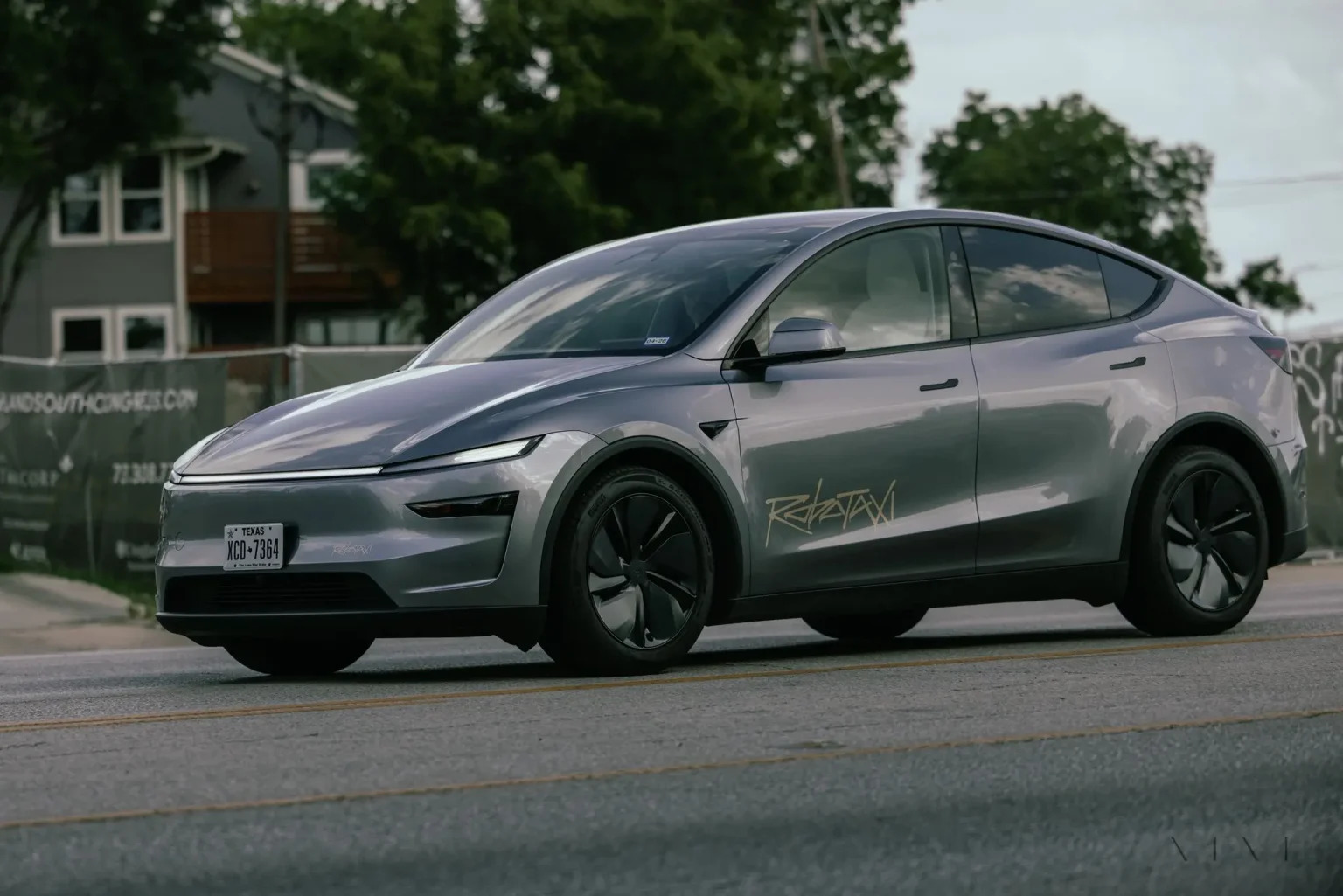
Tesla needs to come through on this one Robotaxi metric, Mark Delaney of Goldman Sachs says.
Tesla is in the process of rolling out its Robotaxi platform to areas outside of Austin and the California Bay Area. It has plans to launch in five additional cities, including Houston, Dallas, Miami, Las Vegas, and Phoenix.
However, the company’s expansion is not what the focus needs to be, according to Delaney. It’s the speed of deployment.
The analyst said:
“We think the key focus from here will be how fast Tesla can scale driverless operations (including if Tesla’s approach to software/hardware allows it to scale significantly faster than competitors, as the company has argued), and on profitability.”
Profitability will come as the Robotaxi fleet expands. Making that money will be dependent on when Tesla can initiate rides in more areas, giving more customers access to the program.
There are some additional things that the company needs to make happen ahead of the major Robotaxi expansion, one of those things is launching driverless rides in Austin, the first city in which it launched the program.
This week, Tesla started testing driverless Robotaxi rides in Austin, as two different Model Y units were spotted with no occupants, a huge step in the company’s plans for the ride-sharing platform.
Tesla Robotaxi goes driverless as Musk confirms Safety Monitor removal testing
CEO Elon Musk has been hoping to remove Safety Monitors from Robotaxis in Austin for several months, first mentioning the plan to have them out by the end of 2025 in September. He confirmed on Sunday that Tesla had officially removed vehicle occupants and started testing truly unsupervised rides.
Although Safety Monitors in Austin have been sitting in the passenger’s seat, they have still had the ability to override things in case of an emergency. After all, the ultimate goal was safety and avoiding any accidents or injuries.
Goldman Sachs reiterated its ‘Neutral’ rating and its $400 price target. Delaney said, “Tesla is making progress with its autonomous technology,” and recent developments make it evident that this is true.
Investor's Corner
Tesla gets bold Robotaxi prediction from Wall Street firm
Last week, Andrew Percoco took over Tesla analysis for Morgan Stanley from Adam Jonas, who covered the stock for years. Percoco seems to be less optimistic and bullish on Tesla shares, while still being fair and balanced in his analysis.
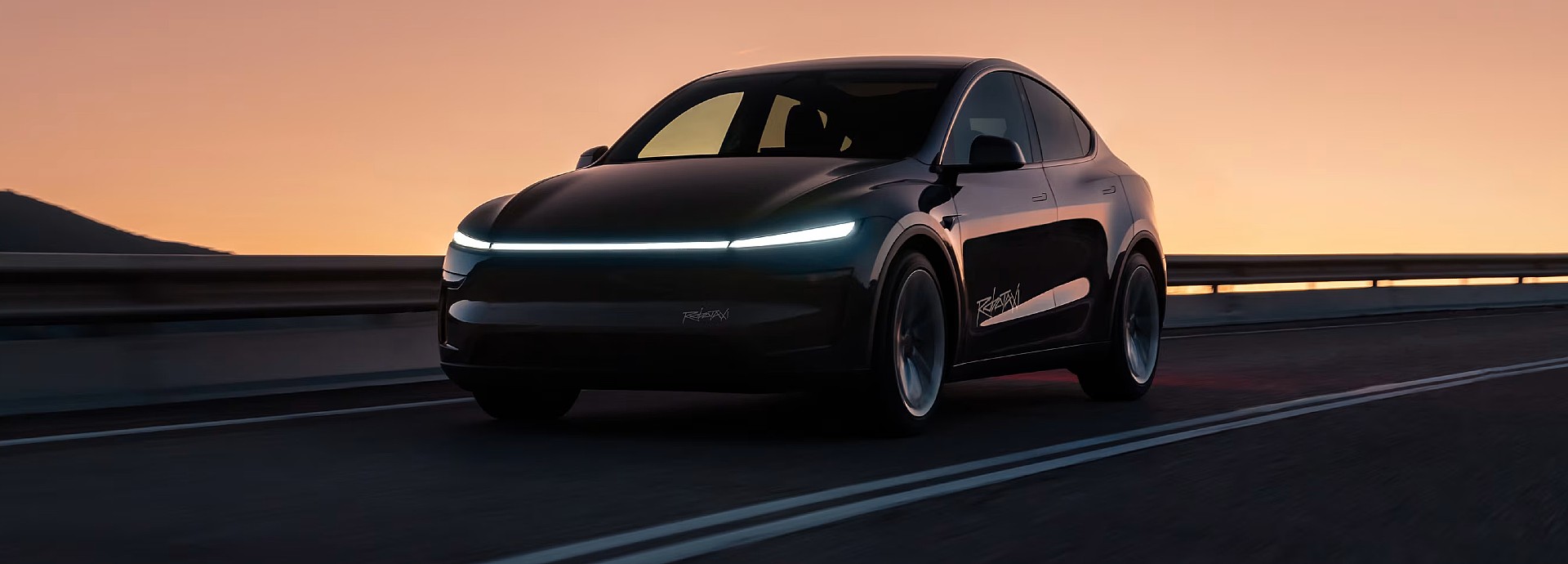
Tesla (NASDAQ: TSLA) received a bold Robotaxi prediction from Morgan Stanley, which anticipates a dramatic increase in the size of the company’s autonomous ride-hailing suite in the coming years.
Last week, Andrew Percoco took over Tesla analysis for Morgan Stanley from Adam Jonas, who covered the stock for years. Percoco seems to be less optimistic and bullish on Tesla shares, while still being fair and balanced in his analysis.
Percoco dug into the Robotaxi fleet and its expansion in the coming years in his latest note, released on Tuesday. The firm expects Tesla to increase the Robotaxi fleet size to 1,000 vehicles in 2026. However, that’s small-scale compared to what they expect from Tesla in a decade.
Tesla expands Robotaxi app access once again, this time on a global scale
By 2035, Morgan Stanley believes there will be one million Robotaxis on the road across multiple cities, a major jump and a considerable fleet size. We assume this means the fleet of vehicles Tesla will operate internally, and not including passenger-owned vehicles that could be added through software updates.
He also listed three specific catalysts that investors should pay attention to, as these will represent the company being on track to achieve its Robotaxi dreams:
- Opening Robotaxi to the public without a Safety Monitor. Timing is unclear, but it appears that Tesla is getting closer by the day.
- Improvement in safety metrics without the Safety Monitor. Tesla’s ability to improve its safety metrics as it scales miles driven without the Safety Monitor is imperative as it looks to scale in new states and cities in 2026.
- Cybercab start of production, targeted for April 2026. Tesla’s Cybercab is a purpose-built vehicle (no steering wheel or pedals, only two seats) that is expected to be produced through its state-of-the-art unboxed manufacturing process, offering further cost reductions and thus accelerating adoption over time.
Robotaxi stands to be one of Tesla’s most significant revenue contributors, especially as the company plans to continue expanding its ride-hailing service across the world in the coming years.
Its current deployment strategy is controlled and conservative to avoid any drastic and potentially program-ruining incidents.
So far, the program, which is active in Austin and the California Bay Area, has been widely successful.








